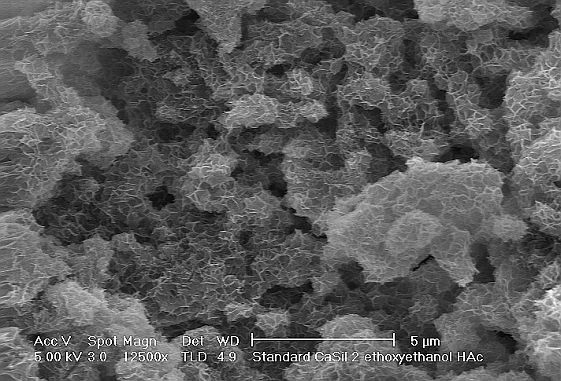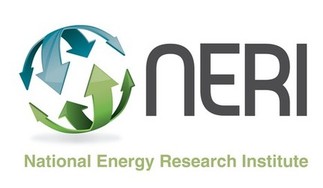Advanced materials
Scanning electronmicroscope image of nanostructured calcium silicate showing open framework structure. VUW

Geothermal heat recovery for electricity generation will typically begin by by flashing steam off the hot geothermal brine (which is about 200-300 oC when piped to the surface) and using this steam to drive a turbine and generate electricity. The remaining geothermal brine flow (now about 120-140 oC) is used for further electricity generation through the binary cycle technology and/or for use as direct heat, before being reinjected back to the sub-surface geothermal reservoir.
Unfortunately the steam-water separation process and consequent cooling of the brine leads to supersaturation of the brine with dissolved silica. This is a major worldwide problem because it precipitates out as an amorphous silica scale which blocks pipes, heat exchangers and reinjection wells. To manage this, geothermal plants need to use higher steam/water separation temperatures and higher binary cycle heat exchanger exit temperatures, both lowering overall heat recovery.
Research by the School of Chemical and Physical Sciences at Victoria University of Wellington (Prof Jim Johnston, Dr Thomas Borrmann) has demonstrated control over the precipitation of the dissolved silica by adding slaked lime to the brine under precisely controlled conditions immediately following separation to convert the silica into a nanostructured calcium silicate. This forms discrete particles that do not adhere to metal or form a scale and can be readily separated from the water prior to reinjection into the well.
The nanostructured calcium silicate has a number of potential applications based on its whiteness, high surface area, absorptive properties and ability to be functionalised. Applications range from a filler in paint, improving the print quality of paper, absorption of phosphate and other pollutants from waterways, and conditioning soil.
This technology will allow the use of higher steam–water separation temperatures for steam production and greater heat recovery from the separated water in the heat exchangers of binary cycle electricity generating plants. Both of these factors increase the energy that can be extracted from the geothermal resource. This will increase electricity production by about 10–15% (relative) while considerably reducing maintenance and field operating costs.
The technology is at pilot scale prior to commercialisation.
